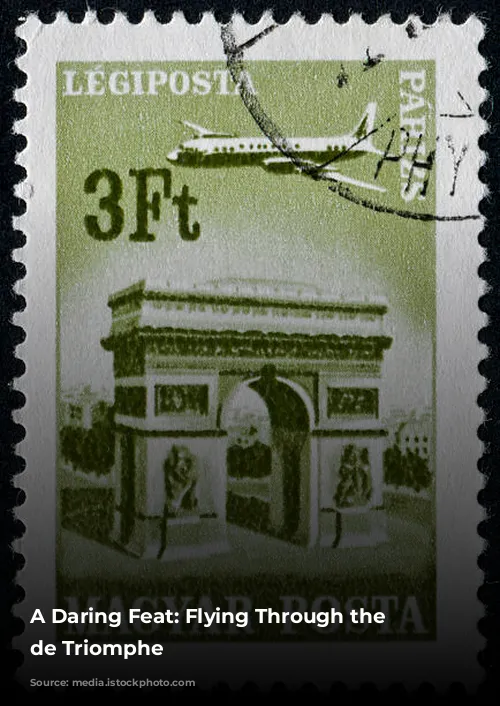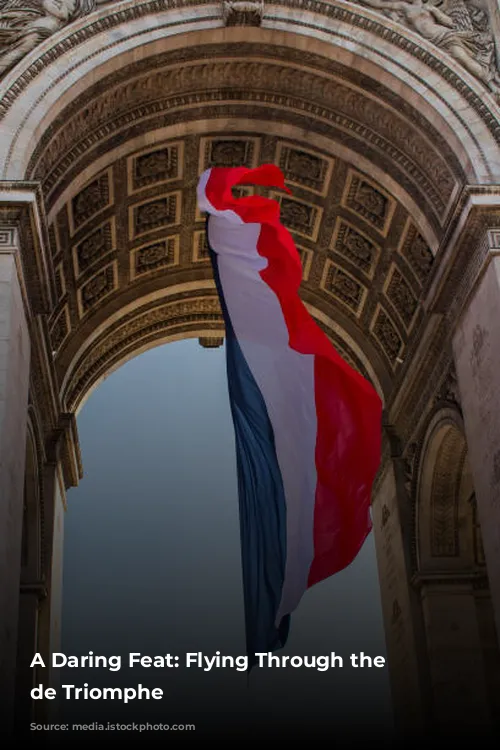Charles Godefroy, a name synonymous with daring and bravery, was a French aviator who etched his name in history by accomplishing a feat that seemed impossible. On a summer day in 1919, he boldly piloted his plane through the iconic Arc de Triomphe in Paris, a feat that left onlookers in awe and the authorities in a frenzy.
Godefroy’s journey to this audacious act began with his enlistment in the French Air Force during World War I. After proving his prowess as a pilot, he was assigned to be a flight instructor. But it was the post-war celebrations that set the stage for his incredible stunt. The French government planned a grand victory parade on the Champs Élysées, where the airmen were expected to march like infantrymen. This order, deemed a slight to the pilots who considered themselves “heroes of the air,” ignited a sense of defiance within them.
A group of aviators, meeting at a bar on the Champs Élysées, decided to respond to the provocation in a spectacular manner. Their plan was to have one of them fly through the Arc de Triomphe during the parade. Their initial choice, Jean Navarre, a renowned flying ace, tragically perished in a practice flight. This loss, however, did not deter Godefroy, who volunteered to take Navarre’s place.
Godefroy, with 500 flying hours under his belt, meticulously planned his daring maneuver. Along with his friend, journalist Jacques Mortane, he studied the air currents and the intricate route through the Arc. He practiced his approach at a bridge in Miramas, preparing himself for the ultimate challenge.
On August 7, 1919, three weeks after the parade, Godefroy took off from Villacoublay airfield in his Nieuport 27 sesquiplane. Under the cloak of secrecy, he navigated towards the Arc de Triomphe. He circled the monument twice, gently assessing the wind and the space he had to maneuver, before making his approach. With calculated precision, he accelerated towards the Arc, squeezing his plane through the narrow opening with a mere foot or two to spare.
Godefroy’s daring maneuver sent shockwaves through the city. People on the ground watched in disbelief as he swooped low over a tram, forcing passengers to scramble for safety. Godefroy then soared over Place de la Concorde, a testament to his audacious accomplishment, before returning to the airfield, where his mechanic examined the engine. The entire flight, shrouded in secrecy, lasted just half an hour.
Mortane, Godefroy’s confidante, documented the entire event with film and photographs. The film, however, was banned by the authorities, who saw it as a dangerous precedent. Despite their disapproval and attempts to suppress the story, Godefroy’s name became synonymous with courage and daring. The authorities, fearing imitation and the potential for disaster, issued a warning to Godefroy.
Godefroy’s thrilling act earned him widespread notoriety, becoming a legend in aviation history. However, it also came with a heavy price. To appease his family, he made a solemn promise to give up flying and instead dedicated himself to his wine trade.
Godefroy passed away in 1958, but his memory lives on. His hometown, Soisy-sous-Montmorency, honored him by naming a street after him and installing a memorial stone, a tribute to the man who defied gravity and wrote his name in the annals of daring feats.
Godefroy’s legacy, however, extends beyond his daring act. He serves as an inspiration to generations of aviators, reminding them of the human spirit’s unwavering desire to push boundaries and reach for the impossible. While Godefroy’s flight through the Arc de Triomphe may have been an audacious stunt, it also marked a turning point in aviation history, demonstrating the incredible potential of flight and the limitless possibilities that lie within the human spirit.














